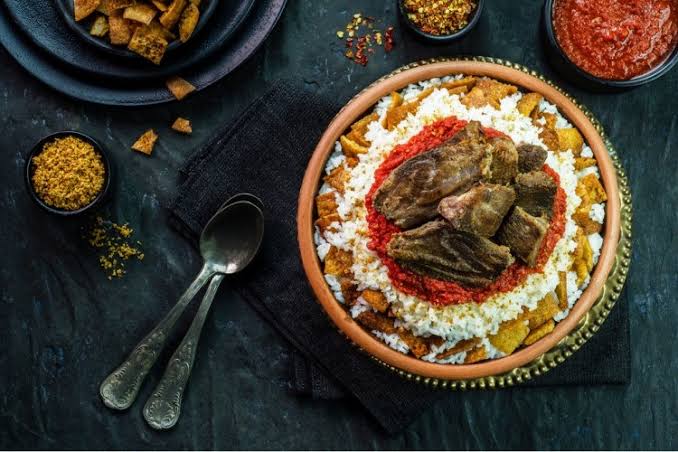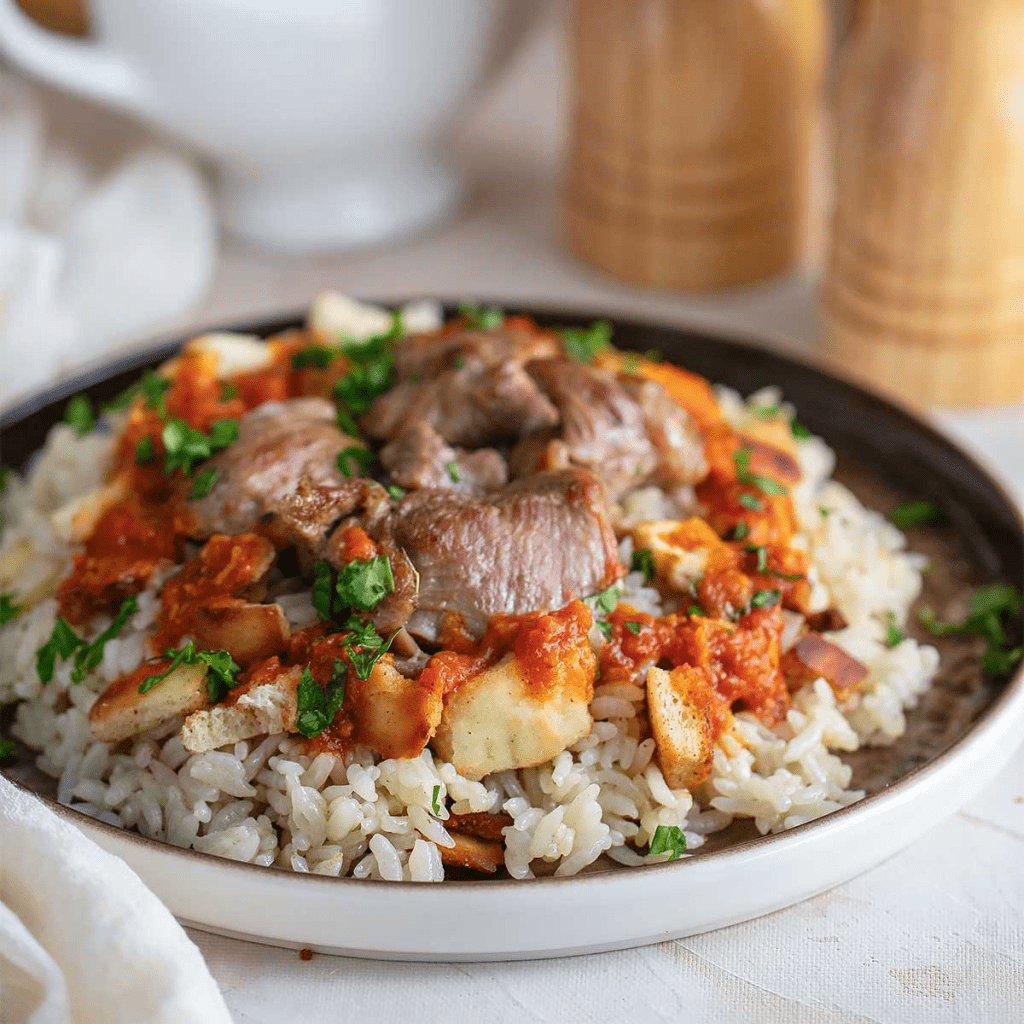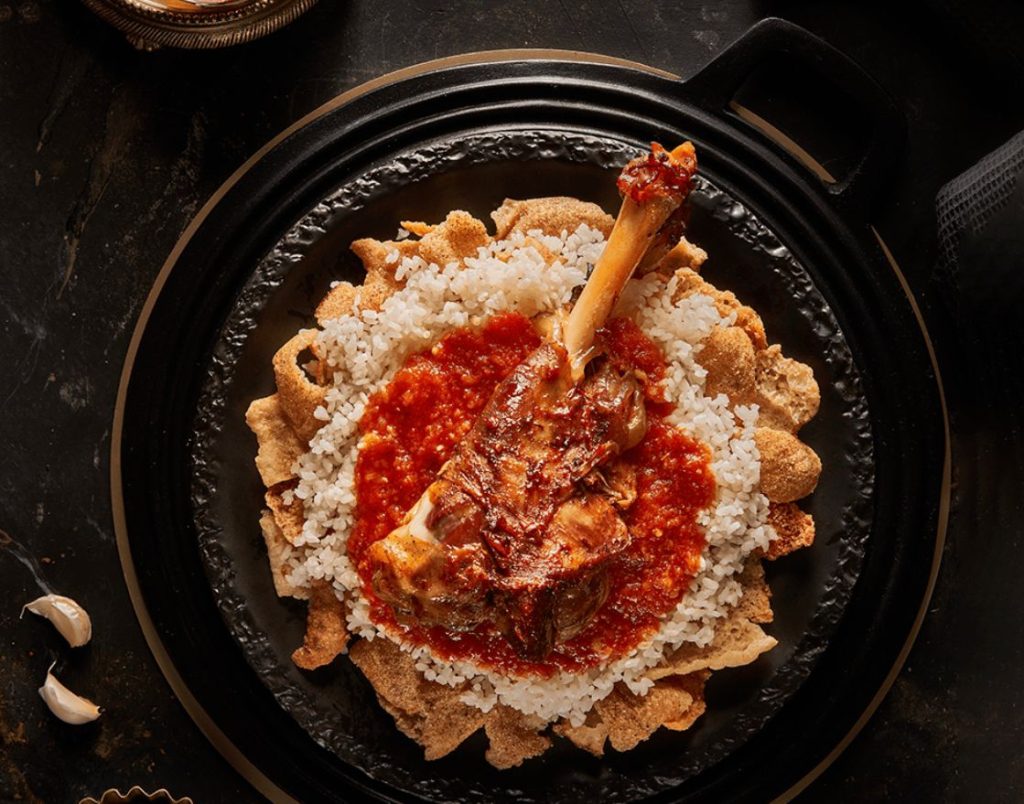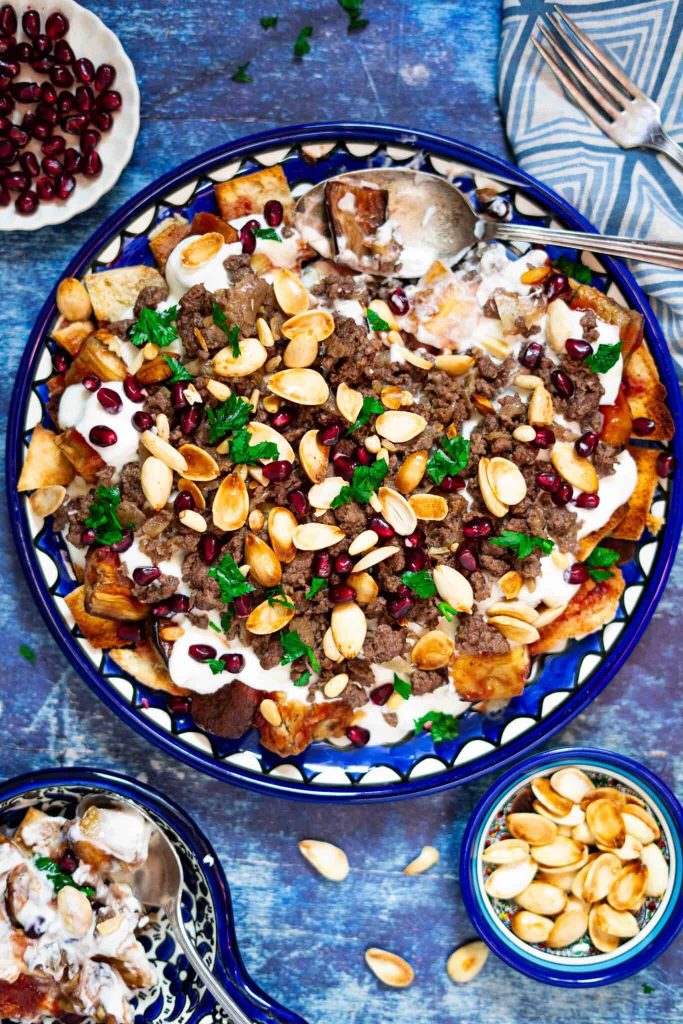When it comes to Eid al-Adha food, there’s one dish that shows up like it’s on a red carpet: Fatteh. It’s hearty, it’s saucy, it’s got layers (literally and emotionally).
While some argue over where it came from, history says it’s been around longer than most civilizations — we’re talking ancient Egypt long. Over time, it spread across the Middle East, picking up different ingredients, flavors, and drama along the way.
But no matter how you serve it, Fatteh stays the ultimate Eid flex.
Where It All Began: Fatteh in the Land of the Pharaohs
Long before Instagram food bloggers existed, the Pharaohs were plating up fatteh like royalty because, well, they were royalty. This dish of bread and meat was considered elite in ancient Egypt, with some even saying the first version is engraved in the Temple of Sobek.


How Kara, an Egyptian Priestess, Basically Invented Fatteh
Legend has it, an Egyptian priestess named Kara made a next-level feast: she roasted a sheep, stuffed it with bulgur and onions, topped it with eggplant, poured broth and vinegar over crumbled bread, and served it to celebrate a sacred feast. Girl was basically the first food influencer.


How the Fatimids Made Fatteh an Eid Icon
Fast-forward to the Fatimid era, and tomato sauce enters the chat. The Fatimid rulers made Fatteh the official Eid dish and even handed it out to the people during Eid al-Adha. And honestly? That generous move locked it in as the star of every Eid table since.


Misconception Time: Fatteh Didn’t Start in the Levant
Let’s clear something up. Some folks think Fatteh came from the Levant, but the OG version is Egyptian through and through.
While it’s a shared dish across cultures, the ancient Egyptian roots are confirmed.
The Levant has definitely put its own spin on the classic, from creamy shawarma layers to eggplant-loaded bowls. If you’re looking to shake up the Eid table this year, here are two Levantine takes worth trying:


Fatteh Went Global: Here’s How the Levant Put Their Spin on It
Fatteh Shawarma: Creamy & Crispy
Syrian shawarma Fatteh might have started as a party dish back home, but in Egypt? It’s gone mainstream — thanks to the rise of shawarma joints on every corner. Egyptians have grown to love it almost as much as their own OG version, and honestly, it’s earned that fanbase. Here’s the recipe:
- Marinate the Chicken – Mix yogurt, garlic, oil, salt, pepper, and add chicken. Freeze overnight.
- Cook the Chicken – Slice and sauté in oil until fully cooked.
- Make the Basmati Rice – Soak, then cook with onions, spices, and water.
- Toast the Bread – Mix garlic and olive oil, coat the bread, and toast in the oven.
- Whip Up the Sauce – Blend yogurt, tahini, garlic, lemon, vinegar, olive oil, and seasoning.
- Assemble & Serve – Layer bread, rice, chicken, and top with sauce. Done!
This one’s all about that crispy-creamy contrast. Literal texture heaven.


Fatteh Makdous: Eggplant Has Entered the Chat
This Levantine queen of a dish is all about that crispy-soft combo: bread, eggplant, yogurt, and vibes. Here’s the Palestinian version:
- Layer it up: bread, eggplant, yogurt sauce, meat — then flex with pine nuts, almonds, and parsley on top.
It’s savory, tangy, crunchy, and a total show-off dish. - Salt + fry eggplant cubes so they crisp without soaking up too much oil.
- Cook up a quick tomato sauce with paste, pomegranate molasses, and seasonings. Add the eggplant to simmer.
- Brown the minced meat with cardamom, salt, and pepper.
- Make the yogurt sauce with tahini, garlic, lemon, and salt.
- Toast the Arabic bread till golden and crunchy.
Why Fatteh Still Owns Eid al-Adha
More than just a meal, Fatteh is tradition, celebration, and low-key storytelling on a plate. Whether you’re digging into your grandma’s Egyptian recipe or trying a Levantine twist, you’re biting into centuries of culture.
It’s the dish that fed kings, crossed borders, and still brings people together every Eid. So next time you see Fatteh on the table, don’t just eat it. Respect the legend.




